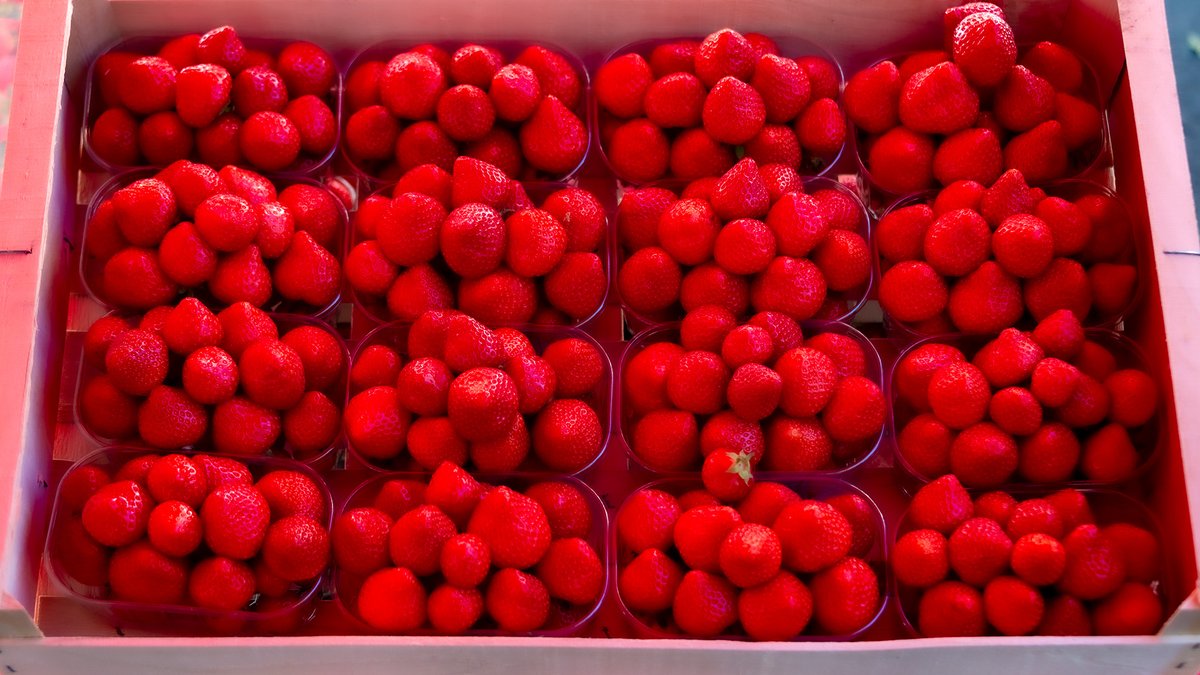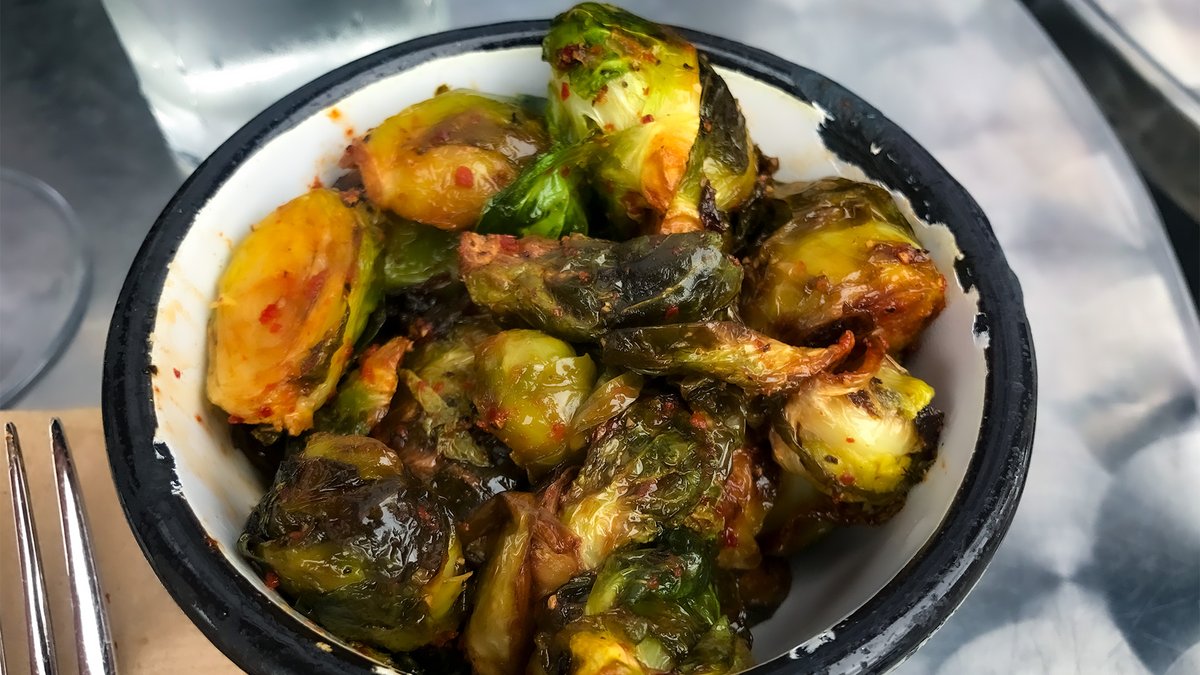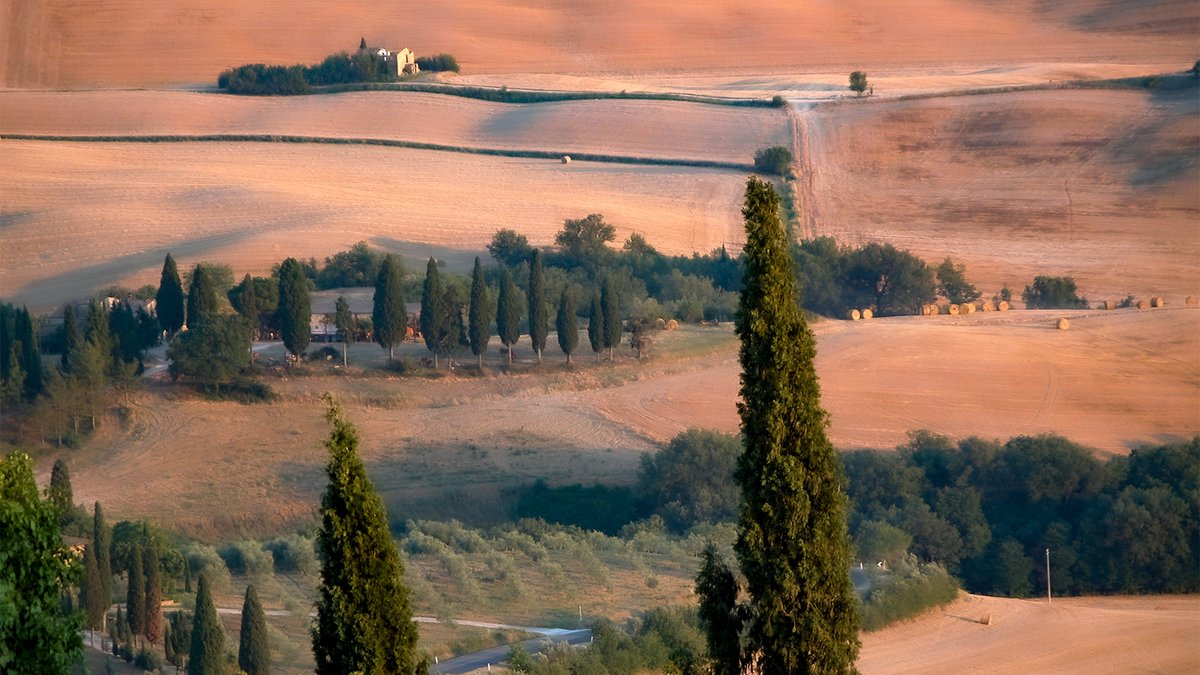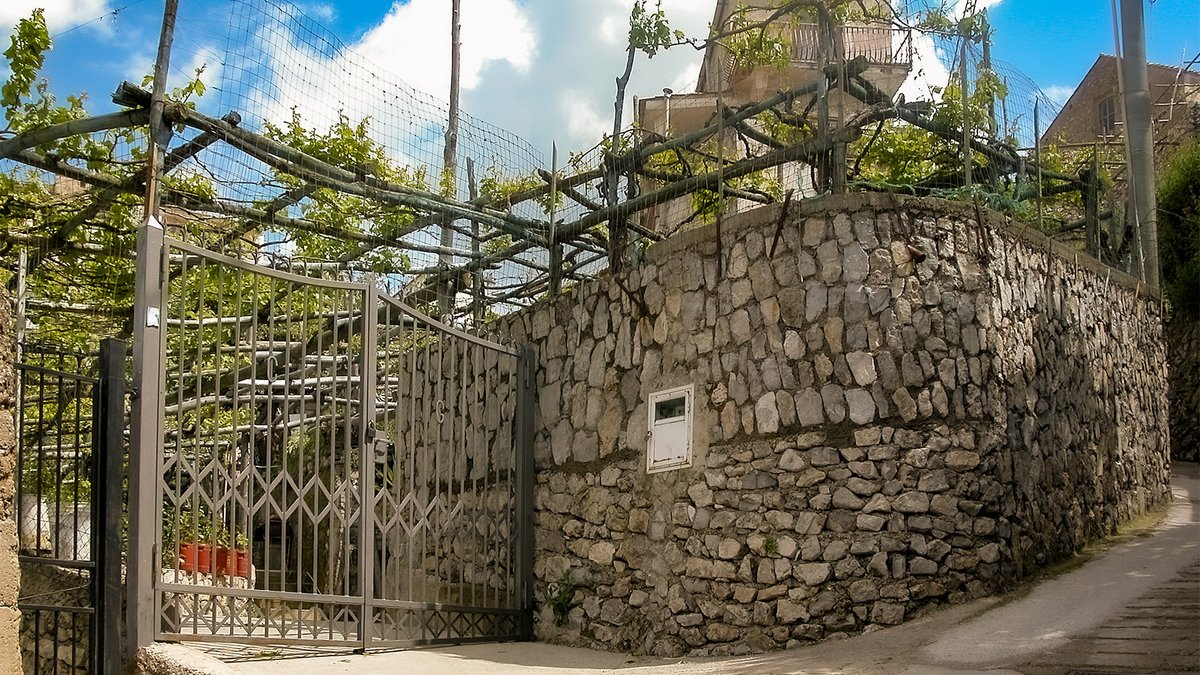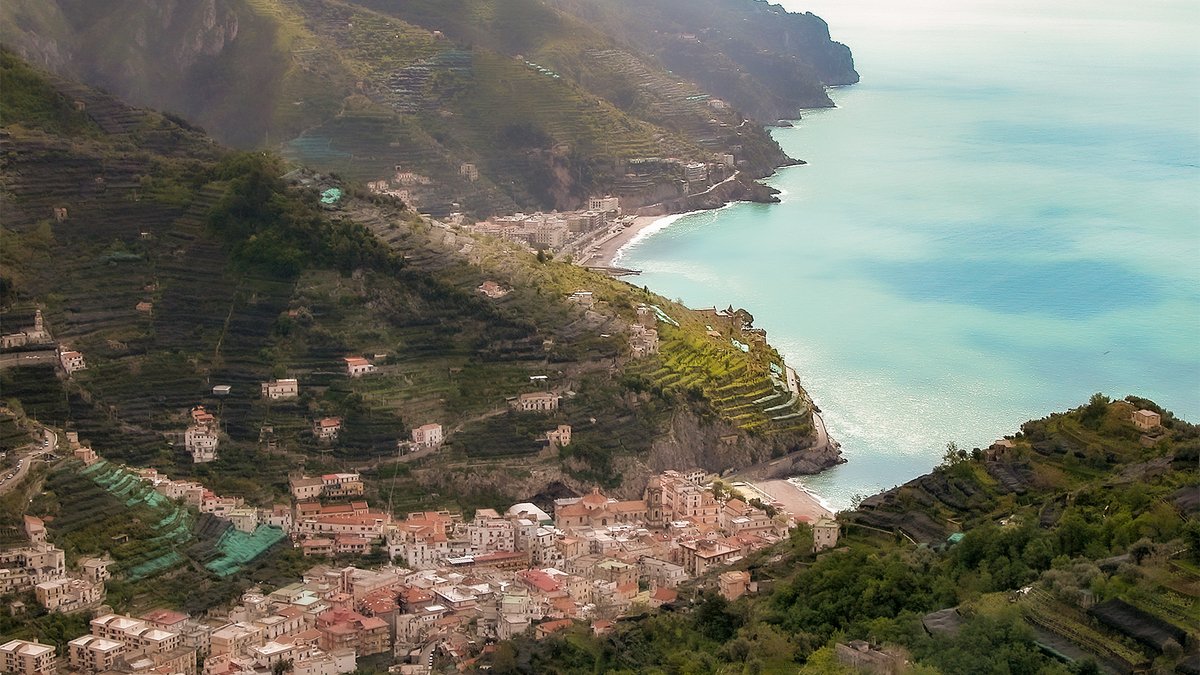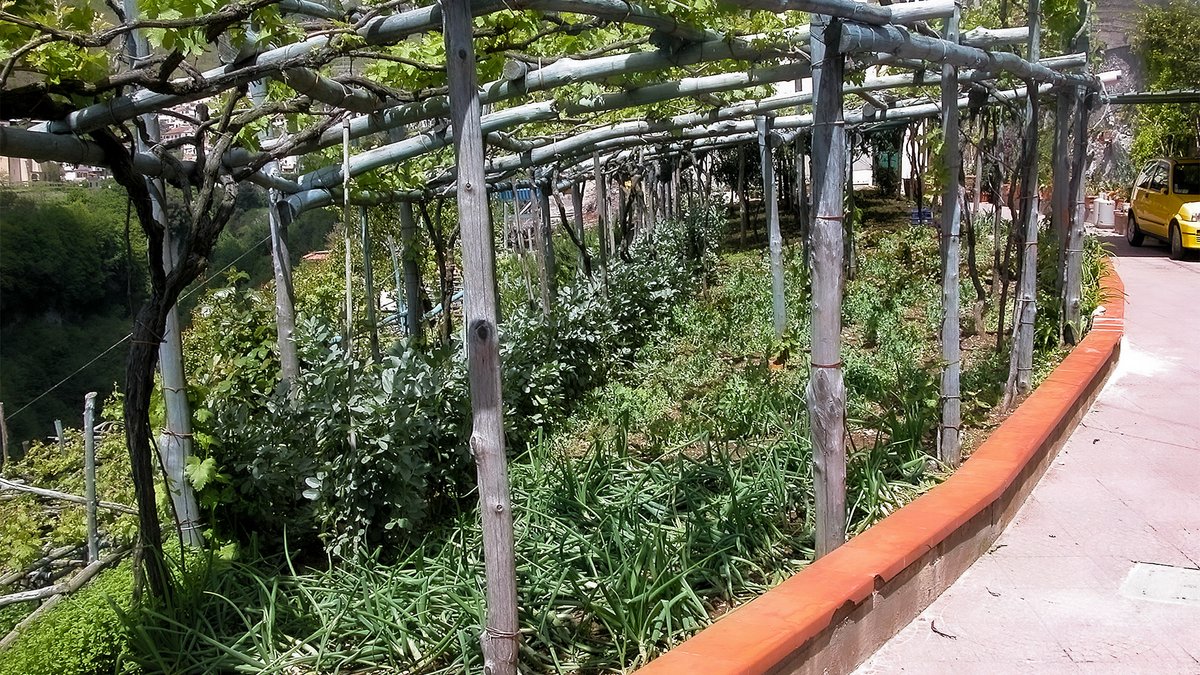I've been working on rebuilding the Original Green website from the ground up since mid-December and have been meaning to put out a sample of the content for comment, so this thread is from the page on Nourishable Places. http://www.originalgreen.org/foundations/nourishable/ 1/
Nourishable places are those where the fields and waters from which most of the main ingredients of our food are harvested come right up to the edge of our towns and cities, and where edible gardens are encouraged in town as well. 2/
We'll always be able to get lightly-used things like spices from far away, but it's best if the bulk of what we eat comes from close around. Until recently, cheap processed food from the industrial food chain made nourishable places a dream instead of a reality. 3/
But things are changing now, as the many virtues of local food are becoming more highly valued by the year.
There isn't yet an economic imperative for nourishable places; serious consumption of local food is still mostly the province of dedicated foodies. 4/
There isn't yet an economic imperative for nourishable places; serious consumption of local food is still mostly the province of dedicated foodies. 4/
Change is afoot with model projects proving that nourishable places derive economic strength in ways not available to conventional development. The transformative designs of three projects from 05-08 put together the code that unlocked the secrets of nourishable places. 5/
These are the key components with their elements & characteristics:
Economic Elements
We had no idea in the year 2000 how to build nourishable places again for one overriding set of problems: economics. 6/
Economic Elements
We had no idea in the year 2000 how to build nourishable places again for one overriding set of problems: economics. 6/
In ancient times, there was a steep drop-off in property values at the city walls because if you lived outside the walls, you might not live long due to everything from wild animals to marauding bands and invading armies. 7/
Developments in heavy artillery 600 years ago rendered city walls obsolete, but property values still dropped off steeply outside the city due to the fact that walking remained the primary mode of travel for most people. 8/
The advent of the automobile rendered the drop in value such a gentle slope that it was imperceptible from almost any viewpoint you could choose. That meant that the ideal of food being raised close around a city just wasn't realistic. 9/
Land values needed for profitable agriculture are pushed miles out from the city by the reach of the car. Work over the past two decades has assembled this set of old and new economic elements which in combination with each other now make nourishable places viable again: 10/
Food Security
The more distant our food supply, the more things there are which can disrupt our food chain. The most obvious cause of disruptions are political. If a nation supplying food has a dispute with another nation, they can refuse to sell them the food. 11/
The more distant our food supply, the more things there are which can disrupt our food chain. The most obvious cause of disruptions are political. If a nation supplying food has a dispute with another nation, they can refuse to sell them the food. 11/
On long supply chains, the supplying nation and the consuming nation can be on fine terms, but if a nation through which the food must be shipped has a dispute with either the supplying nation or the consuming nation, they can block transport of the food across their borders. 12/
Monetary policy can disrupt food supply with no animosty on any side. It wasn't so long ago that grocery prices increased some 40% in the UK one summer simply because of a spike in currency exchange rates. 13/
Structural disruptions in the industrial food chain can also disrupt our food supply, and these disruptions can arise from a number of causes. 14/
Because the industrial food chain super-scales all aspects of food growing, harvesting, processing, and distribution, it is fragile to events like COVID-19 which can shut down huge segments of food supply, as we have seen recently. 15/
Natural disasters disrupt food supplies in other ways. A hurricane can put ports and distribution systems out of commission for extended periods of time. 16/
Crops in a nourishable place may be severely damaged in a natural disaster, but there may be enough left to subsist on long enough for disaster aid to arrive whereas starvation is a real threat in places served solely by a damaged industrial food chain. 17/
Food security is one of the highest moral imperatives of any place because it means that regardless of other challenges, the people have food to eat. Our ancestors understood this implicitly, and chose locations for new communities that were clearly nourishable sites. 18/
Even after villages grew into great cities, engravings of city maps explicitly illustrated the farms and waters all around, highlighting the fact that if you can't eat there, you can't live there. 19/
The Value of the Long View
Studies have shown that a long view into nature can increase the value of real estate by 25% or more. And if that real estate fronts onto nature instead of backing onto nature so that there is a street in front... 20/
Studies have shown that a long view into nature can increase the value of real estate by 25% or more. And if that real estate fronts onto nature instead of backing onto nature so that there is a street in front... 20/
... then neighbors can walk to the edge and get the view, too. This increases values 2-3 blocks deep into the urbanism, or even deeper in the event of higher-value views like an ocean view. Seaside, Florida famously carried substantial increases in value a quarter-mile deep. 21/
This was in the 1980s, when the only real value on the Gulf Coast had previously been found at the oceanfront condos, with gas stations, liquor stores, and T-shirt shops on the landward side of the county road, and nearly-worthless scrub oak land further inland. 22/
We began designing places in 2003 which made the most of this information. The first such place was sited on 1,200 acres and had previously been laid out as a conventional sprawl subdivision with 800 lots on curvy streets ending in cul-de-sacs all across the land. 23/
The market rate for developed land all around was $20K/acre: 2 acre lots for $40K. We designed 8 compact hamlets and villages on the land instead, preserving most of the land as the woodlands, farmland, and lake shown above, ending up with over triple the number of homes. 24/
Almost immediately, the value of developed land within the first village rose to $500,000 per acre; 25 TIMES the developed value of subdivisions all around. This showed clearly that the value of the long view need not be limited to spectacular views like oceans or mountains. 25/
This stunning differential in developed value was also key to unlocking the mystery of open land preservation around communities that does not require self-effacing virtue by wealthy foundations because it provides a greater return on investment. 26/
It does so even when most of the land is preserved as forests, fields, streams, and lakes. The economic elements below both depend upon and reinforce the effect of this element. 27/
Adjacency to Nature:
A long view into nature and adjacency to nature seem quite similar, but they are actually different but complementary experiences. The long view is passive, and can be seen at a window. 28/
A long view into nature and adjacency to nature seem quite similar, but they are actually different but complementary experiences. The long view is passive, and can be seen at a window. 28/
The highest value of adjacency to nature occurs when you actually get out into it. Parks and greens offer a taste of nature within a city or town, whereas full immersion into nature best occurs outside of town in large swaths of nature. 29/
Google "access to nature" and you'll get millions of results. Access to nature is essential to human physical, mental, and arguably spiritual wellness, and has been written about since ancient times by countless thinkers. 30/
Access is good; adjacency is even better. Access to nature means you can get to nature sometime in the course of a normal day; adjacency to nature means that it is nearby, so that you can walk there easily whenever you feel the need. 31/
The 5-minute walk is a standard that has been in use in the US since the Perry diagram a century ago as a common rule of how far Americans will walk to get from edge to center of a neighborhood. 32/
Adjacency to nature means that you're within half that distance, or a couple blocks. In communities like the village above which are no more than four blocks wide, a walk of a couple blocks gets you to the edge of the countryside. 33/
In larger towns and cities, a walk of a couple blocks should take you to a neighborhood green or park. Studies have repeatedly shown that adjacency to nature boosts real estate values because people value the things they love. 34/
Good-Neighbor Agriculture
Industrial economics require bad-neighbor agriculture. Because everything is super-sized for increased efficiency, things that would go unnoticed at a family farm nearby become anywehre from a major nuisance to hazardous to your health. 35/
Industrial economics require bad-neighbor agriculture. Because everything is super-sized for increased efficiency, things that would go unnoticed at a family farm nearby become anywehre from a major nuisance to hazardous to your health. 35/
Huge amounts of chemical fertilizer, crop-dusted poisons, fouled runoff, and the stench of confined animal feeding operations (CAFOs) where animals live out their entire short, miserable lives in a cage are all things best kept far away from towns and cities. 36/
Good-neighbor agriculture, on the other hand, can snuggle right up to the edge of town and provide adjacency to cultivated nature to the residents of the town. Good-neighbor agriculture is essential to the character of some of the most famous landscapes of the world... 37/
... such as the fields of Tuscany. And while the beauty of a woodland landscape is undeniable, a landscape of good-neighbor agriculture is more interesting because it changes more throughout the year as it is planted, cultivated, and harvested. 38/
By being more interesting, good-neighbor agriculture makes the urbanism of the communities looking out upon it more valuable. Good-neighbor agriculture bolsters the benefits of the economic elements above in another important way: 39/
Land kept perpetually open by a land trust is good, but doesn't necessarily create revenue beyond tax deductions, which are an esoteric benefit only guaranteed so long as the legal and political systems that fostered them survive. 40/
Good-neighbor agriculture, on the other hand, produces hard cash revenue, which is a more tangible and durable incentive to keep the land undeveloped so that it can provide the benefits of these other economic elements long innto the future. 41/
Local Markets & Culture
This image is from Los Poblanos Historic Inn & Organic Farm in Albuquerque, which is one of a growing number of artisinal farms which follow the three rules of profitable agriculture laid out by famed Bahamian farmer Ian Goodfellow: 42/
This image is from Los Poblanos Historic Inn & Organic Farm in Albuquerque, which is one of a growing number of artisinal farms which follow the three rules of profitable agriculture laid out by famed Bahamian farmer Ian Goodfellow: 42/
1. Do not allow any part of your operation touch the industrial food chain, else you will forever be a serf. 2. Make your products, whether produce or artisinal products, have added value in some way. 43/
One way is to be organic, as Los Poblanos is. Another is to be local, and by that, Ian means that it should be so intensely local that you don't need the normal food distribution networks. 44/
This means that you're close enough to your customers that you can make deliveries to the markets and restaurants. 3. The third option is to make your farm a cultural destination that brings customers to your fields or waters, especially on the weekends. 45/
Los Poblanos & its inn makes this a weeklong and through-the-year experience available to those across the Albuquerque region. Do these three things, Ian says, and you can transform small-scale farming from subsistence or even failure into a reliably profitable operation. 46/
And farms like these make the best good-neighbor agriculture as they are not only good to look at, but good to experience, from culture and dining all the way down to harvesting your own produce from their fields, trees, and beds. 47/
Efficiencies
US industrialized agriculture has trumpeted the claim since the 1970s that "[American farmers feed the world]( https://www.npr.org/sections/thesalt/2013/09/17/221376803/american-farmers-say-they-feed-the-world-but-do-they)." This claim was likely an outgrowth of USDA chief Earl Butz's campaign to "get big or get out" in that era. 48/
US industrialized agriculture has trumpeted the claim since the 1970s that "[American farmers feed the world]( https://www.npr.org/sections/thesalt/2013/09/17/221376803/american-farmers-say-they-feed-the-world-but-do-they)." This claim was likely an outgrowth of USDA chief Earl Butz's campaign to "get big or get out" in that era. 48/
And whenever there was a crop failure or political failure to manage food production in visible places around the world, there were highly-publicized airlifts of grain from the US with "grown in the USA" stamped prominently on the boxes. 49/
The problem was that this was a highly orchestrated PR campaign for the industrialization of farming, but not the truth, which is self-evidently obvious because countries around the world did not quit farming and switch to importing all their food from the US. 50/
As with any effective PR campaign, it was supported by other narratives which bore some fragments of truth, but not the whole story. Chief among these incomplete narratives was the myth of efficiency. 51/
The agricultural industrialists would trumpet the fact that one guy on a two-story tall tractor could now tend a thousand acres per day. The wonders of modernity! Whereas one worker in Ian Goodfellow's farm could tend about one acre. 52/
How was it possible to tolerate such inefficiencies in this modern age? Surely the only way to farm now is the high-volume industrial way. And there can be no other way because America feeds the world. With that moral imperative, all other thinking was swept off the table. 53/
Here's the problem: that efficiency is a myth, promulgated by taking such a tunnel view that we only see one thing: the guy on the tractor. By doing so, many inefficiencies of the industrial food chain are hidden from view. These are only a few of those inefficiencies: 54/
In the picture 7 tweets ago, it's clear that about ⅔ of the land is bare. Actually, it's more like 90% when you get down to ground level. That means that the 90% must be repeatedly sprayed with poisons, otherwise weeds will spring up and choke out the crop. 55/
The high inefficiency of row-cropping is a requirement of industrial farming for most crops, because those massive tractors must be able to drive through the fields without crushing the crops. 56/
The bio-intensive agriculture which makes up most of good-neighbor agriculture, on the other hand, is not nearly so man-hour efficient in the fields, but is far more efficient per acre. 57/
The industrial food chain can feed one or two people per acre because of its per-acre inefficiency, while bio-intensive agriculture can feed 20 to 40 people per acre, according to those most expert in its cultivation.
And that is only the beginning. 58/
And that is only the beginning. 58/
Good-neighbor agriculture has very few people between farm and table, whereas the industrial food chain requires heavy trucks and their drivers to get food to processing plants and their hundreds or even thousands of factory workers... 59/
... overseen by the office buildings of agribusiness and their legions of employees, and then the distribution systems to get the industrially-produced "food-like substances" (Michael Pollan's term) to the corporate groceries. 60/
And then there's the extreme inefficiency of the fact that the industrial food chain is all driven by oil, which creates high caloric inefficiency. As a general rule, it takes 80 calories of petroleum to create one calorie of processed food-like substances. 61/
The bottom line is this: if you view the operations of good-neighbor agriculture versus the industrial food chain as a whole, good-neighbor agriculture is more efficient on all counts. 62/
On acre-efficiency alone, it's about 20-to-1. And by the time you count all the employees in the industrial food chain, good-neighbor agriculture likely comes out ahead. 63/
And while good-neighbor agriculture isn't usually fossil-fuel-free, their use is less in farming and far less in transport. So good-neighbor agriculture wins all around on the question of efficiency. 64/
Food Elements
The food elements themselves, as noted previously in Ian Goodfellow's rules, can and often should have characteristics which create additional value. But this raises issues of food equity. 65/
The food elements themselves, as noted previously in Ian Goodfellow's rules, can and often should have characteristics which create additional value. But this raises issues of food equity. 65/
If food has more value, isn't this all about the wealthy and their food, excluding everyone else? Under the top-down industrial food chain, it definitely does. You rarely find poor people shopping at the end of the industrial food chain informally known as "Whole Paycheck." 66/
Of all the things that set nourishable places apart from the products of the industrial food chain is the fact that in a nourishable place, people can raise their own food either by necessity or by choice, whereas none of us will ever *be* the industrial food chain. 67/
Billions of dollars in fields, transport fleets, factories, offices, and distribution systems of the industrial food chain stand in the way. But everyone with a bit of land or even a few containers in a sunny spot can raise a garden that supplies at least some of their food. 68/
The ability to raise at least some of your own food in a nourishable place is strengthened by the fact that the very same principles and practices used by the family farms to raise healthy and delicious food around a town can be used by people raising their own at home. 69/
As those principles and practices become part of a living agrarian tradition of a nourishable place, they are shared freely with those who live there; something true living traditions always do. 70/
So people who by necessity or choice raise at least some of their own food can look to what the family farms nearby are doing and say "I can do that." 71/
Added-Value Produce & Proteins
Everyone understands that organic food is more expensive, but there are other ways of adding value to food, and there are other values that can be added beyond just the financial value. 72/
Everyone understands that organic food is more expensive, but there are other ways of adding value to food, and there are other values that can be added beyond just the financial value. 72/
Local food is a rising alternative to organic in value-added food. Agribusiness has figured out how to do organic, but the requirements of industrial scale mean that industrial organic can be a very different thing from local organic. 73/
Because the supply chains of industrialized produce can be very long, ordinary vegetables would be reduced to pulp after jostling around for three weeks in the back of a truck from South America to the US East Coast. 74/
This means that most industrial produce meant to endure long trips must be genetically engineered to be tough enough to look fresh by the time it finally gets to the grocery store a few thousand miles from where it was raised. 75/
Anyone who has tasted a local heirloom tomato right after a slice of a genetically toughened industrial tomato knows they hardly taste like the same vegetable. And if industry has engineered that much taste out, who's to say that the nutritional value hasn't suffered as well? 76/
Once, heirloom vegetables were those which had been grown from seeds a local family kept and replanted each spring after enjoying that year's harvest. Treasured like other family heirlooms. The seeds were treasured for several reasons, including a delicious harvest. 77/
But they were also likely kept year to year because the plants were well-adapted to the region because nobody wants to keep planting seeds likely to produce crop failures in a particular place. 78/
Industry is good at latching onto names that appeal to people and producing things using those names. So while "heirloom" vegetables today might have started out as someone's actual family heirloom seeds, if you find "heirloom" produce in a corporate grocery store... 79/
... the plants were likely raised in industrial-scale greenhouses somewhere hundreds or thousands of miles away. You can choose to buy heirloom vegetables from a local farmer for more than you'd pay for the generic industrial vegetables at the grocery store... 80/
... or you can actually keep the seeds of the vegetables you love most as your own family heirlooms and enjoy them year after year at no cost except for a little exercise planting the seeds and tending the plants. 81/
This is one example of the "I can do that" principle noted above where higher-value food need not cost you any money at all. There are too many ways of adding value to food to list them all here, so the last one to consider is the value of local honey. 82/
If raw, honey may contain pollen from plants nearby that cause your allergies. By exposing you to tiny amounts of pollen, you are in effect being undergoing a process known as [immunotherapy]( https://health.howstuffworks.com/diseases-conditions/allergies/allergy-treatments/local-honey-for-allergies.htm?utm_pagetype=multi) that's much like getting a vaccine against a disease. 83/
There is much debate about the effectiveness of local raw honey in reducing allergies, with the normal suspects on each side of the debate, but what is beyond debate is that if you patronize your local beekeepers, you will help build demand for healthy honeybees. 84/
And if you've followed news of bee colony collapse around the world over the past decade, you certainly realize how important pollinators like honeybees are to us all. 85/
Artisanal Food Products
A nourishable place produces raw produce and proteins, but the townspeople can also build cottage industries making artisanal food products from the things grown around the town. 86/
A nourishable place produces raw produce and proteins, but the townspeople can also build cottage industries making artisanal food products from the things grown around the town. 86/
These cottage industries should focus on hyper-local products which the locals love and which cannot be purchased at corporate grocery stores. In the beginning, widely-known products like jams and jellies with a local twist work fine. 87/
But over time, a robust cottage industry of artisanal food products will likely come up with local delicacies not initially found anywhere else on earth, and for which the place may become famous. 88/
While they originated in France, pralines are known across the US as a New Orleans specialty, and while andouille sausage may have also originated in France, Laplace, Louisiana is widely known as its American home. 89/
So even if an artisanal product did not originate in a place, it can still make that place famous if the local cottage industry producing it is dedicated to doing it better than anywhere else around. 90/
Local Cuisine
The third branch of local food in a nourishable place is cuisine. This is the branch that will bring people in from the greatest distance for an extended visit. Today, most of the US has no local cuisine and a bit of regional cuisine... 91/
The third branch of local food in a nourishable place is cuisine. This is the branch that will bring people in from the greatest distance for an extended visit. Today, most of the US has no local cuisine and a bit of regional cuisine... 91/
... but most meals at local restaurants are made up of the cuisine of places elsewhere around the world, and most of it is mediocre. If someone eats out and goes home satisfied, that's fine. 92/
But the high standard is cuisine the locals love, made of things that grow well across the region.
Louisiana, again, has a great example: Alexandria is the heart of Acadiana, also known as "Cajun country." 93/
Louisiana, again, has a great example: Alexandria is the heart of Acadiana, also known as "Cajun country." 93/
If you want total immersion in Cajun food, music, and culture, go to Alexandria. And while you're there, look around for national chain Cajun restaurants. You'll be looking a long time, because there aren't any. 94/
Whenever the national chains come to Acadiana, they all quickly fail because there's no comparison between authentic local Cajun food and the corporate knock-offs.
There's another powerful lesson to learn from Cajun food in Acadiana: it is a strong living tradition... 95/
There's another powerful lesson to learn from Cajun food in Acadiana: it is a strong living tradition... 95/
... which means it is continuing to evolve as we watch. The sautéed Brussels sprouts dish above would never appear in any corporate Cajun chain restaurant's menu, but the Acadiana chefs have taken it on and are making it their own in an unmistakably Cajun way... 96/
... along with many other dishes. This is the high standard to which nourishable places may aspire: local food as the foundation for local artisanal food products and an authentic local cuisine for which people will travel to experience. It won't happen overnight. 97/
It begins by asking "what should we grow here?" Then "what can we make with it?" Then "how can we prepare it in such a way that people keep coming back for it?" 98/
Agricultural Characteristics
The good-neighbor agriculture of nourishable places has defining characteristics missing so completely from industrial food production that we need reintroduction to these qualities pre-industrial agriculture almost always exhitibed: 99/
The good-neighbor agriculture of nourishable places has defining characteristics missing so completely from industrial food production that we need reintroduction to these qualities pre-industrial agriculture almost always exhitibed: 99/
Nourishable places can and should be surrounded by family farms that are beautiful to look upon. Looking out upon local food production that is ugly might still feel virtuous, but it's far better if it's beautiful as well. 100/
It helps that farming at a family scale is predisposed to look good because things tend not to get out of scale. The Tuscan countryside is filled with scenes like this, and is arguably the global high standard for a beautiful agrarian landscape. 101/
There are many excellent alternatives around the world. And beauty isn't a benefit solely outside of town; agriculture will get into towns and neighborhoods everywhere once we’ve learned to make it beautiful to everyone. We need to relearn how to do lovable edible gardens. 102/
Because there is no scale too small for growing food in a nourishable place, garden plots can be highly opportunistic. No two-story tall tractor could ever cultivate this garden because it couldn't even get TO this garden, much less work the beds. 103/
The agriculture of nourishable places is highly terrain-adaptable because people learned thousands of years ago how to terrace the land to make it fruitful when otherwise it would be just be barren slopes. 104/
Notice HOW adaptable it is: some of those slopes are steeper than 1:1, a grade considered completely untouchable in the US. Never mind that these people in this place have been raising food sustainably on these slopes for centuries. 105/

 Read on Twitter
Read on Twitter

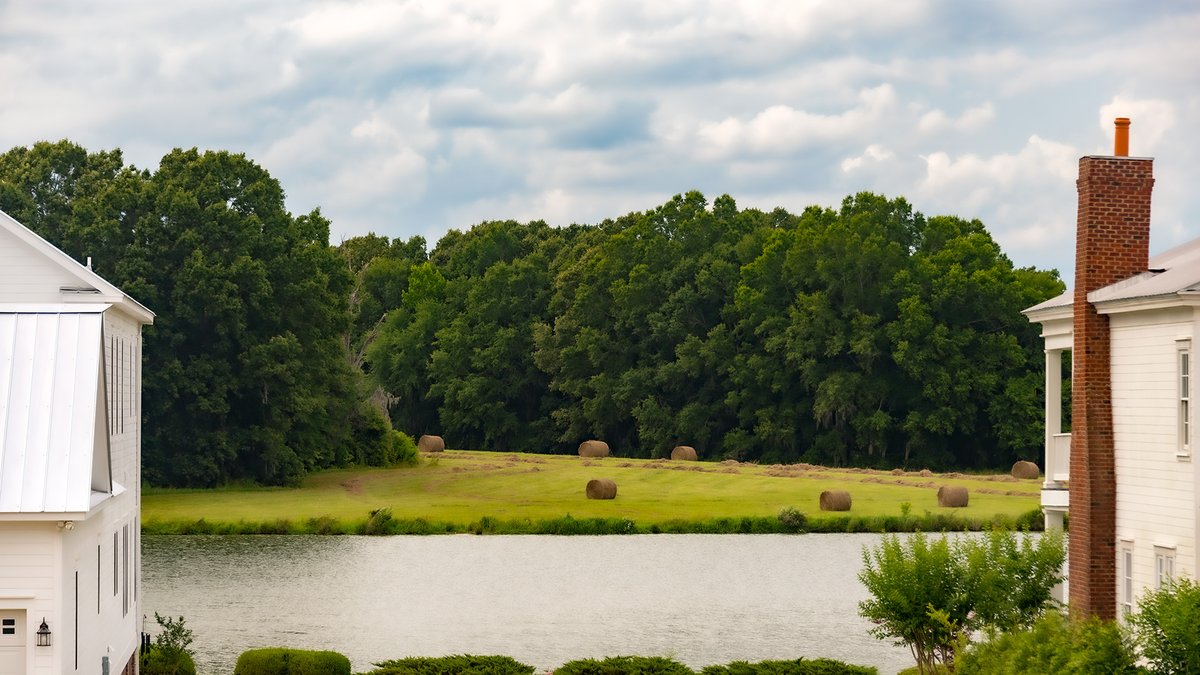
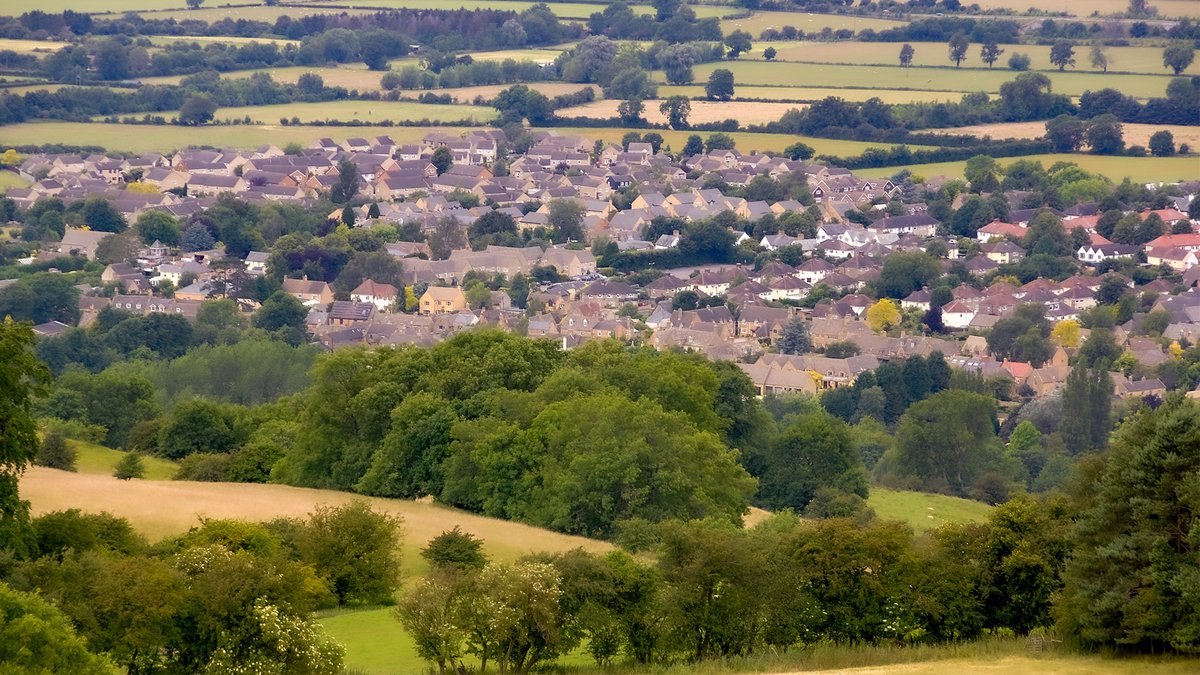
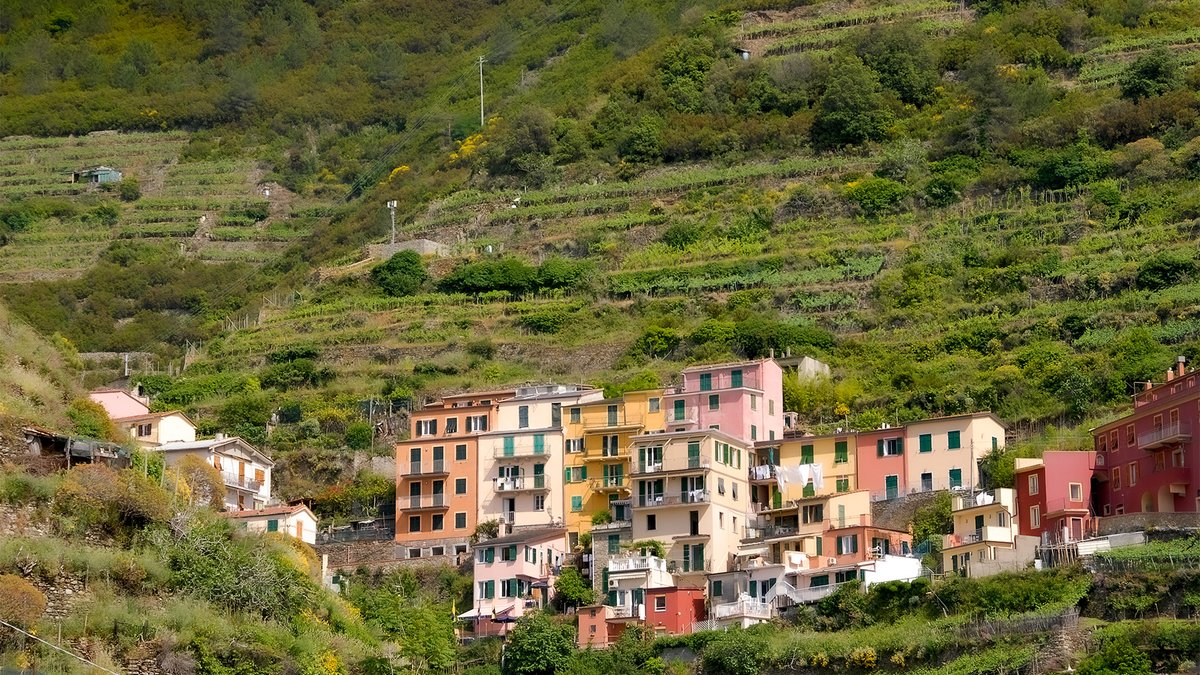
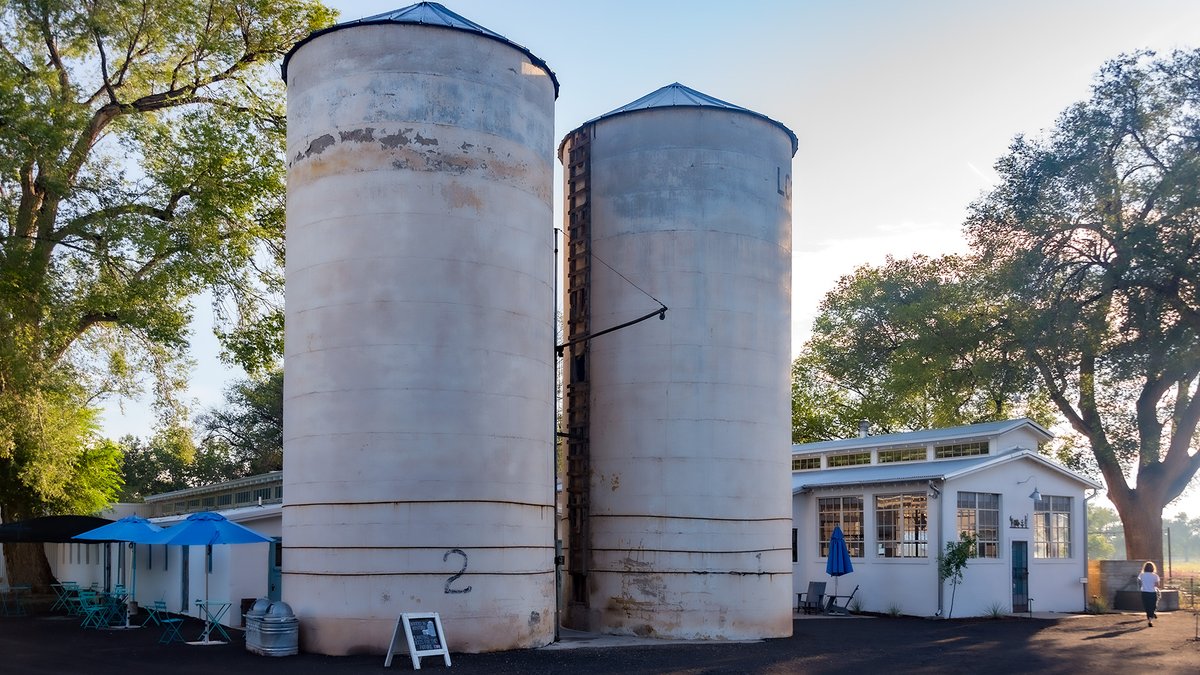
." This claim was likely an outgrowth of USDA chief Earl Butz's campaign to "get big or get out" in that era. 48/ Efficiencies US industrialized agriculture has trumpeted the claim since the 1970s that "[American farmers feed the world]( https://www.npr.org/sections/thesalt/2013/09/17/221376803/american-farmers-say-they-feed-the-world-but-do-they)." This claim was likely an outgrowth of USDA chief Earl Butz's campaign to "get big or get out" in that era. 48/](https://pbs.twimg.com/media/EsYZ2QsXAAIXtoI.jpg)
